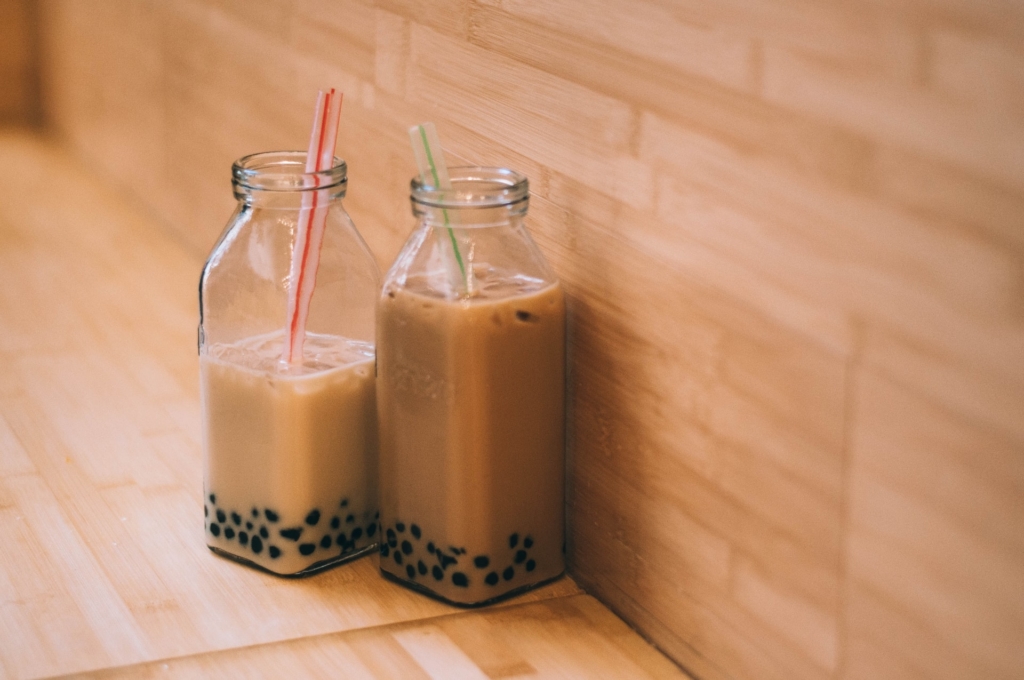Ever stop to wonder about the chewy pearls in your boba tea? How about the tiny balls in tapioca pudding? Both are made from tapioca, a starch that also works behind the scenes to hold together gluten-free breads, and thicken liquids and sauces. Learn more about this versatile ingredient below.
How is tapioca made?

Tapioca comes from the cassava root (also known as yuca), a hardy, adaptable, and versatile dietary staple in some tropical regions. Cassava pulp, when squeezed, will produce a starchy liquid; evaporation of the water leaves behind fine tapioca powder that is processed into flour, flakes, sticks, or pearls. Black tapioca pearls are made through this same process, but take their color from the addition of brown sugar. Note that tapioca flour isn’t the same as cassava flour, which is ground cassava root.
What does tapioca taste like?
Nothing. Tasteless and odorless, tapioca is used only for its textural and binding properties.
What is it used for?

Tapioca flour, sometimes combined with other flours, can be used to make gluten and grain-free bread, flatbread, and baked goods. (Try our gluten-free Almond Blueberry Coffee Cake.)
Tapioca pearls are included in desserts and sweet snacks (such as the pudding that bears its name), and bubble tea, also known as boba tea. This is a sweet beverage of brewed tea with tapioca pearls, syrup, and milk, served cold over ice. You can even make your own boba pearls.
Tapioca in any of its forms can serve to thicken soups, sauces, and gravies, and as a binding agent in foods like burgers and crab cakes. It lends body and silky texture to recipes like our Classic Chicken Noodle Casserole. Its non-culinary use is as clothing starch.
How do you use tapioca?

Tapioca flour can be widely used in gluten-free recipes, though due to its moisture-absorbing properties, some adjustments may need to be made to ensure moisture remains in the recipe. Some say it’s less affected by freezing and thawing than cornstarch or flour, so it might be a good choice for baked goods intended for the freezer.
Other forms of tapioca must be soaked or boiled before eating. They will likely increase in size, become translucent, and take on a chewy, gummy texture.
Is tapioca good for you?

As a nearly pure carbohydrate, with very few nutrients, some consider tapioca to be “empty” calories. In areas where cassava and tapioca are staples, tapioca flour is sometimes fortified with more nutrient-dense flours. Although it may not have many health benefits, tapioca is grain and gluten free, and has increased in popularity as a gluten-free alternative to wheat and corn.
Another possible benefit of tapioca is something called “resistant starch,” a starch that acts like fiber within the body’s digestive system. Resistant starch has been linked to various health benefits, such as fostering gut bacteria, reducing inflammation, lowering blood sugar levels, and improving metabolic health. Resistant starch is also found in other foods with potentially higher levels of nutrients, like cooked and cooled potatoes or rice, legumes, and green bananas.
How can I find it?
Tapioca in its various forms is usually sold in the baking aisle of supermarkets. It’s also available online from sellers like Bob’s Red Mill.
Feature Image: PublicDomainPictures from Pixabay



